As friends and family already know, I love me some anatomical charts, grotesque dissections of the intricate layers of the human body, old-timey skeletons and medical charts of muscle groups and the nervous system, etc. It appeals to my love of dissection in general, I think: peeling away layers of a body — or a topic (i.e. fashion) — in order to better understand the interconnectivity between seemingly disparate systems and subjects. It has therefore been will great relish that I’ve explored the blog Street Anatomy which collects art, design, and fashion, as related to anatomy (check out the Fashion and Products + Apparel categories). Here are some of my favorites:
And I was blown away at the hand-bleached skeleton hoodie:
Another, more shameful, addiction I’ve indulged lately is Lady Gaga videos. Lady Gaga shares my fascination with anatomy, often merging the robotic and mechanical with flesh and blood in her always deliciously ridiculous outfits. Several of her videos feature men with metal prostheses — a jaw, an eye patch — and she herself assumes a kind of crippled robot appearance after falling from a balcony during a lovers’ scuffle:
This photo is terrible quality, but it still gives the full package of this awesomely crazy ensemble — and yes, those are braces she’s clutching (while in stilettos, no less!):
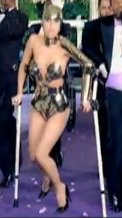
“Paparazzi” video
Though it’s more of a brace gone awry, the costume very much reminds me of the robot woman in Fritz Lang’s Metropolis (1927), playing with the idea of anatomy that mimics humans’ but is actually android:
I love this double bustier, which highlights how somewhat arbitrarily the corset (an exoskeleton if ever there was one) has dictated where breasts fall —
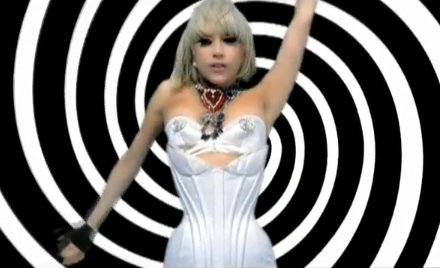
“Paparazzi” video
sometimes pushed flat (as in the 16th century),
sometimes hoisted up to the collarbone.
And while this exaggerated, padded ribcage / spine seems edgy in 2009…
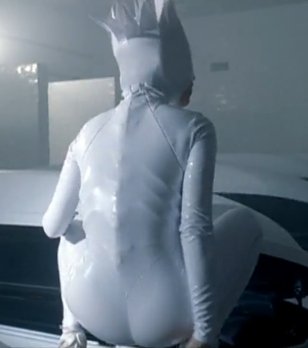
“Bad Romance” video
it was downright scandalous in 1938 when Elsa Schiaparelli designed the dress version (which I want sooooo bad, by the way):
Even when her costumes don’t mimic metal armor, Lady Gaga favors clothes that are extremely restrictive, and hard or voluminous to the point of hilarious and delightful impracticality: essentially sartorial exoskeletons that often cover her very head and face. I highly recommend youtubing her full videos even if you don’t like her music, but beware: they are highly addictive and you too might end up loving her somewhat against your will.
Like every so-called cutting edge, influential trend setter, Lady Gaga is not without her influences. I see a lot of Helmut Newton (possibly my favorite fashion photographer) in Lady G’s style:
Newton had a series juxtaposing live models with identical mannequins, as on the cover of his fantastically awesome book:
He also had an usual series of ads that were actually x-rays of the products (jewelry, shoes), directly comparing and contrasting the metal prongs and hinges to the bones and joints of the women wearing the baubles:
As much as I myself love adorning my body with beautiful underwear and clothes and jewelry and hats, there’s something beautiful, raw and powerful in the brutal functionality of human anatomy. Being somewhat of a prude in terms of body coverage, the idea of wearing modest layers that suggest the stripping away of clothes (and skin) appeals to me greatly, also satisfying my penchant for the grotesque. It’s not such a leap to see the relationship between structural skeletons, supportive braces / prosthetics, and protective armor, right? But what is it about these hard bodies that make them so repulsive, and yet enticing? The frailty and strength of the human form? Could it be related to our growing obsession with (corporate) transparency, coupled with a need for structure? It’s an idea, anyway.
See my post on Vamps for more on skeletons, sex, and death.


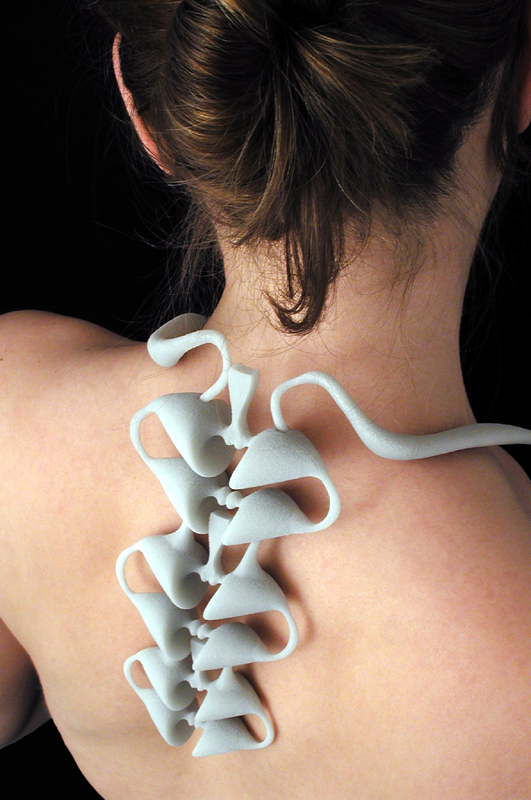
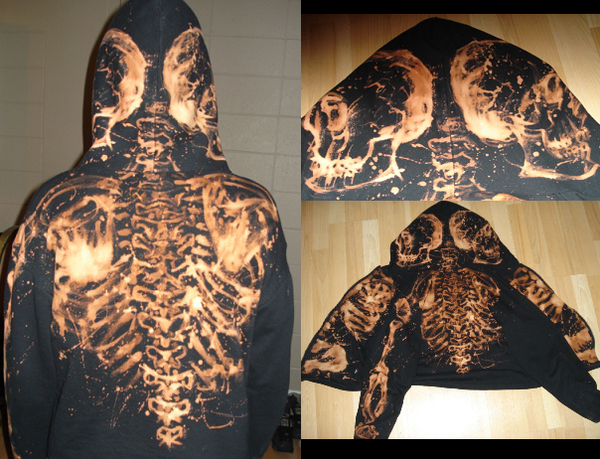
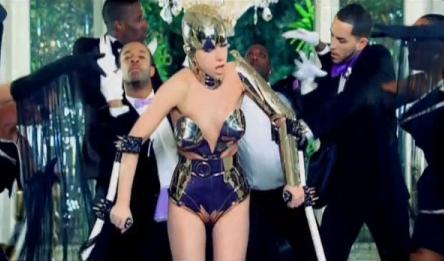





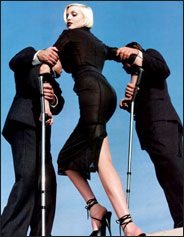


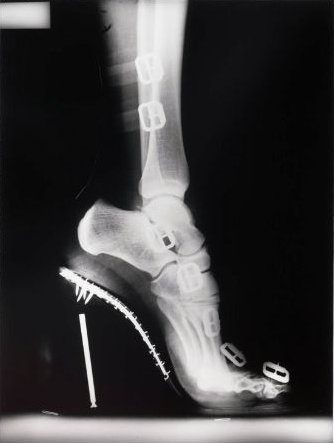






























5 comments
para kazanma yolları says:
Aug 7, 2011
“How cool, been mezmerizaed by Lady Gaga’s work for over a year now – truly refreshing”
Myron says:
Jun 15, 2010
Pleased to see some over-arching themes to Gaga’s aesthetic. Just as a note, the Brass lingerie Metropolis Look is either an actual Thierry Mugler, or a knockoff. I had never really noted it until I was flipping through the amazing Mugler book, and there it was, if not the same exact thing, something very VERY close. The girl’s got good taste!
Tove Hermanson says:
Jul 2, 2010
I was recently looking through a book of Mugler’s fashions and noticed the exact same thing– I now believe that several of Gaga’s most iconic ensembles are vintage Mugler, including the white feather headdress that practically ate her head.
Steve says:
Jan 22, 2010
… How cool, been mezmerizaed by Lady Gaga’s work for over a year now – truly refreshing
edgertor says:
Jan 5, 2010
in, i think, the 2002 collection (possibly earlier), diesel put out a boot with a skeleton foot etched in the leather, black on very dark bronze/brown/black.
i’m still looking for them. I’d make my own, but they would be clunky and DIY, whereas the diesel ones were quite elegant.